
Building and construction materials manufacturer Owens Corning (NYSE:OC) announced better-than-expected revenue in Q2 CY2025, but sales fell by 1.5% year on year to $2.75 billion. Guidance for next quarter’s revenue was optimistic at $2.75 billion at the midpoint, 2.3% above analysts’ estimates. Its non-GAAP profit of $4.21 per share was 10.3% above analysts’ consensus estimates.
Is now the time to buy Owens Corning? Find out by accessing our full research report, it’s free.
Owens Corning (OC) Q2 CY2025 Highlights:
- Revenue: $2.75 billion vs analyst estimates of $2.71 billion (1.5% year-on-year decline, 1.4% beat)
- Adjusted EPS: $4.21 vs analyst estimates of $3.82 (10.3% beat)
- Adjusted EBITDA: $703 million vs analyst estimates of $662.1 million (25.6% margin, 6.2% beat)
- Revenue Guidance for Q3 CY2025 is $2.75 billion at the midpoint, above analyst estimates of $2.69 billion
- Operating Margin: 18.4%, up from 16.4% in the same quarter last year
- Free Cash Flow Margin: 4.7%, down from 12% in the same quarter last year
- Market Capitalization: $11.98 billion
Company Overview
Credited with the discovery of fiberglass, Owens Corning (NYSE:OC) supplies building and construction materials to the United States and international markets.
Revenue Growth
A company’s long-term sales performance can indicate its overall quality. Even a bad business can shine for one or two quarters, but a top-tier one grows for years. Thankfully, Owens Corning’s 10.4% annualized revenue growth over the last five years was solid. Its growth beat the average industrials company and shows its offerings resonate with customers.
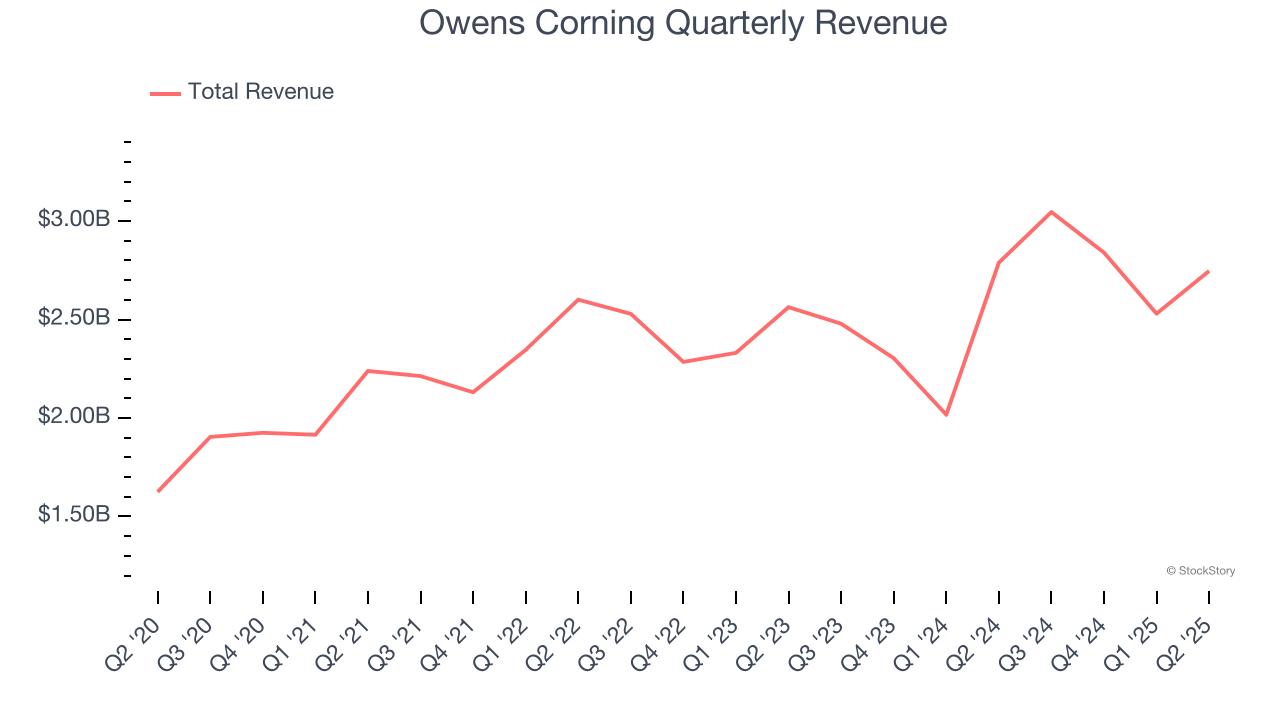
Long-term growth is the most important, but within industrials, a half-decade historical view may miss new industry trends or demand cycles. Owens Corning’s recent performance shows its demand has slowed as its annualized revenue growth of 7.2% over the last two years was below its five-year trend. 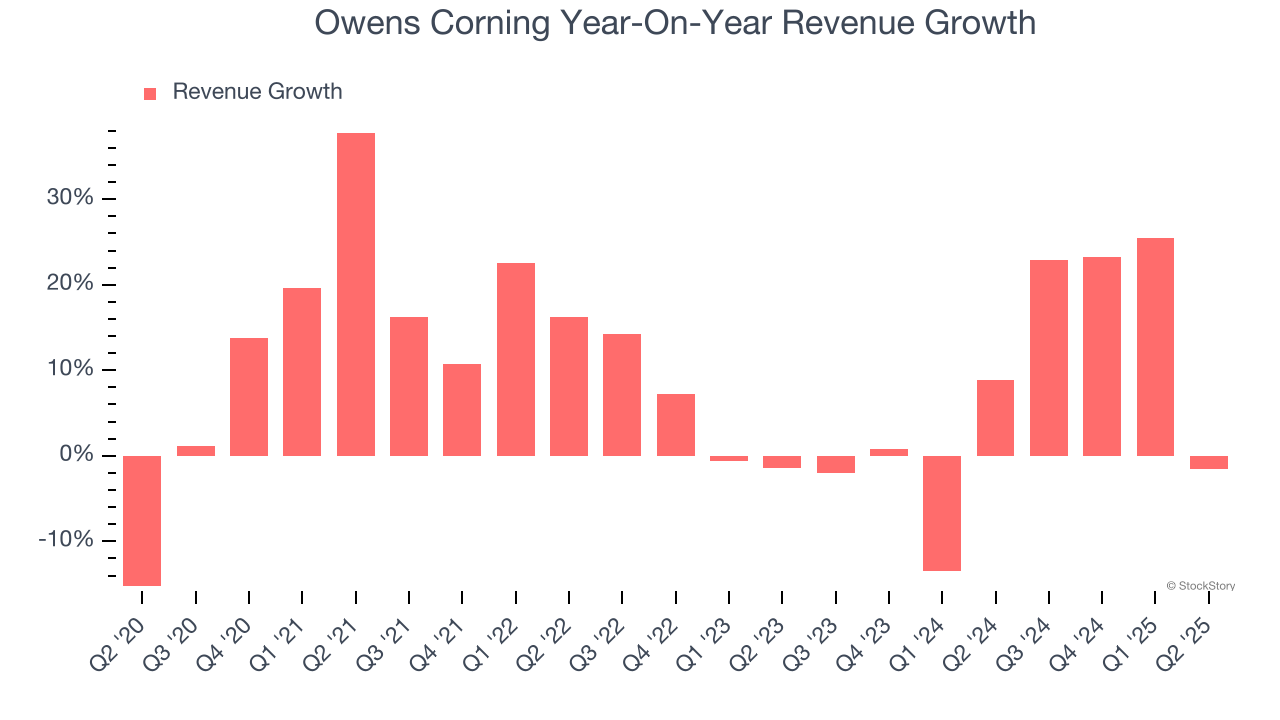
This quarter, Owens Corning’s revenue fell by 1.5% year on year to $2.75 billion but beat Wall Street’s estimates by 1.4%. Company management is currently guiding for a 9.7% year-on-year decline in sales next quarter.
Looking further ahead, sell-side analysts expect revenue to decline by 6.1% over the next 12 months, a deceleration versus the last two years. This projection doesn't excite us and implies its products and services will face some demand challenges.
Today’s young investors won’t have read the timeless lessons in Gorilla Game: Picking Winners In High Technology because it was written more than 20 years ago when Microsoft and Apple were first establishing their supremacy. But if we apply the same principles, then enterprise software stocks leveraging their own generative AI capabilities may well be the Gorillas of the future. So, in that spirit, we are excited to present our Special Free Report on a profitable, fast-growing enterprise software stock that is already riding the automation wave and looking to catch the generative AI next.
Operating Margin
Operating margin is an important measure of profitability as it shows the portion of revenue left after accounting for all core expenses – everything from the cost of goods sold to advertising and wages. It’s also useful for comparing profitability across companies with different levels of debt and tax rates because it excludes interest and taxes.
Owens Corning has been a well-oiled machine over the last five years. It demonstrated elite profitability for an industrials business, boasting an average operating margin of 15.9%. This result was particularly impressive because of its low gross margin, which is mostly a factor of what it sells and takes huge shifts to move meaningfully. Companies have more control over their operating margins, and it’s a show of well-managed operations if they’re high when gross margins are low.
Analyzing the trend in its profitability, Owens Corning’s operating margin decreased by 5.6 percentage points over the last five years. This raises questions about the company’s expense base because its revenue growth should have given it leverage on its fixed costs, resulting in better economies of scale and profitability.
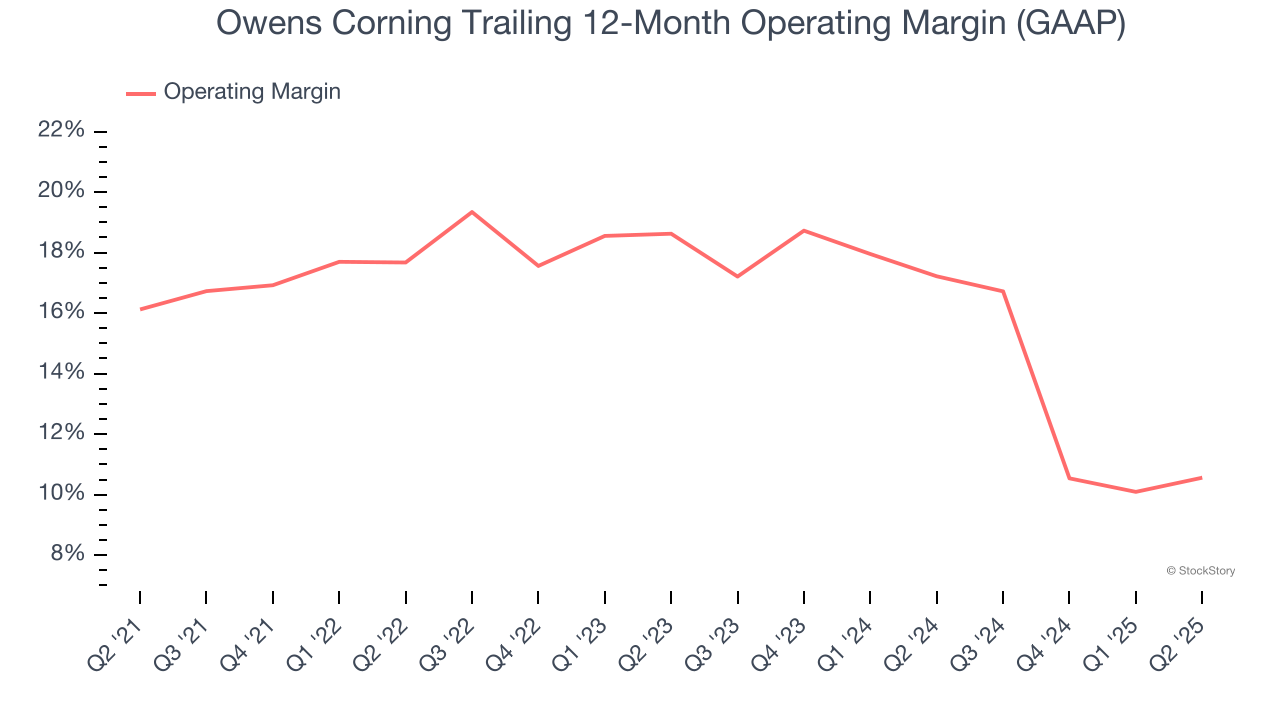
This quarter, Owens Corning generated an operating margin profit margin of 18.4%, up 2 percentage points year on year. The increase was encouraging, and because its operating margin rose more than its gross margin, we can infer it was more efficient with expenses such as marketing, R&D, and administrative overhead.
Earnings Per Share
Revenue trends explain a company’s historical growth, but the long-term change in earnings per share (EPS) points to the profitability of that growth – for example, a company could inflate its sales through excessive spending on advertising and promotions.
Owens Corning’s EPS grew at an astounding 28.4% compounded annual growth rate over the last five years, higher than its 10.4% annualized revenue growth. This tells us the company became more profitable on a per-share basis as it expanded.
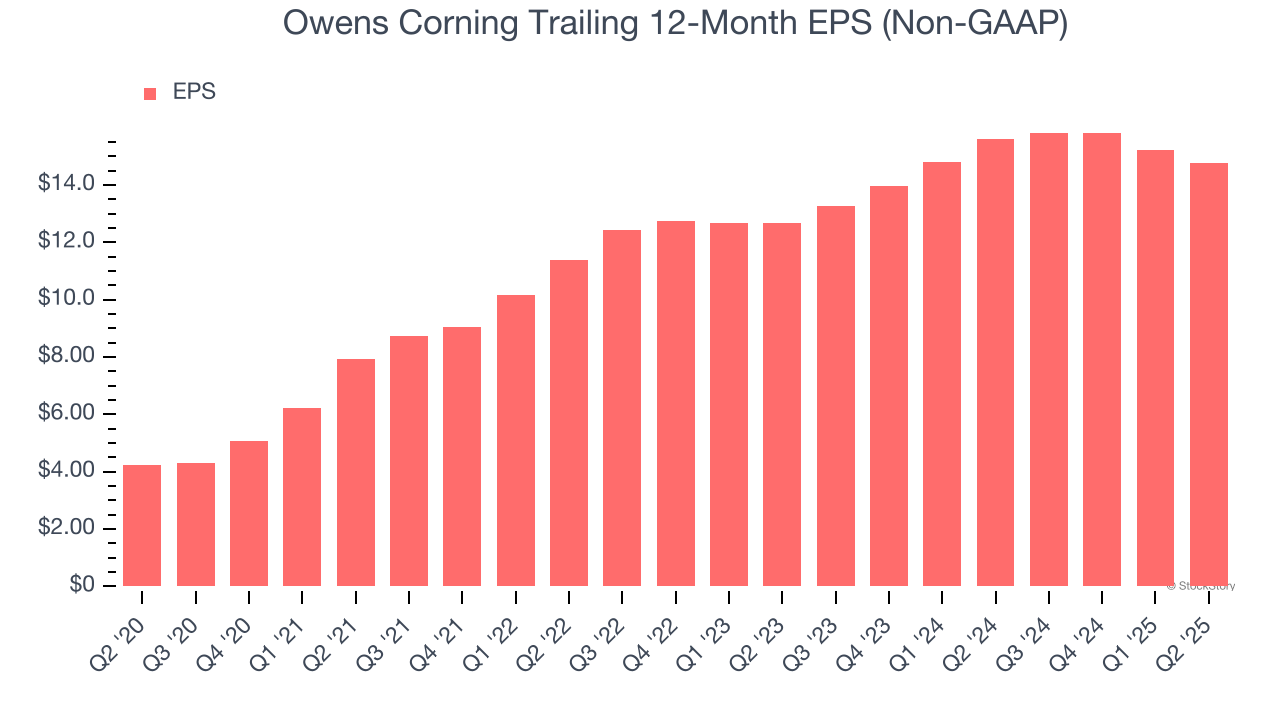
Diving into the nuances of Owens Corning’s earnings can give us a better understanding of its performance. A five-year view shows that Owens Corning has repurchased its stock, shrinking its share count by 21.5%. This tells us its EPS outperformed its revenue not because of increased operational efficiency but financial engineering, as buybacks boost per share earnings. 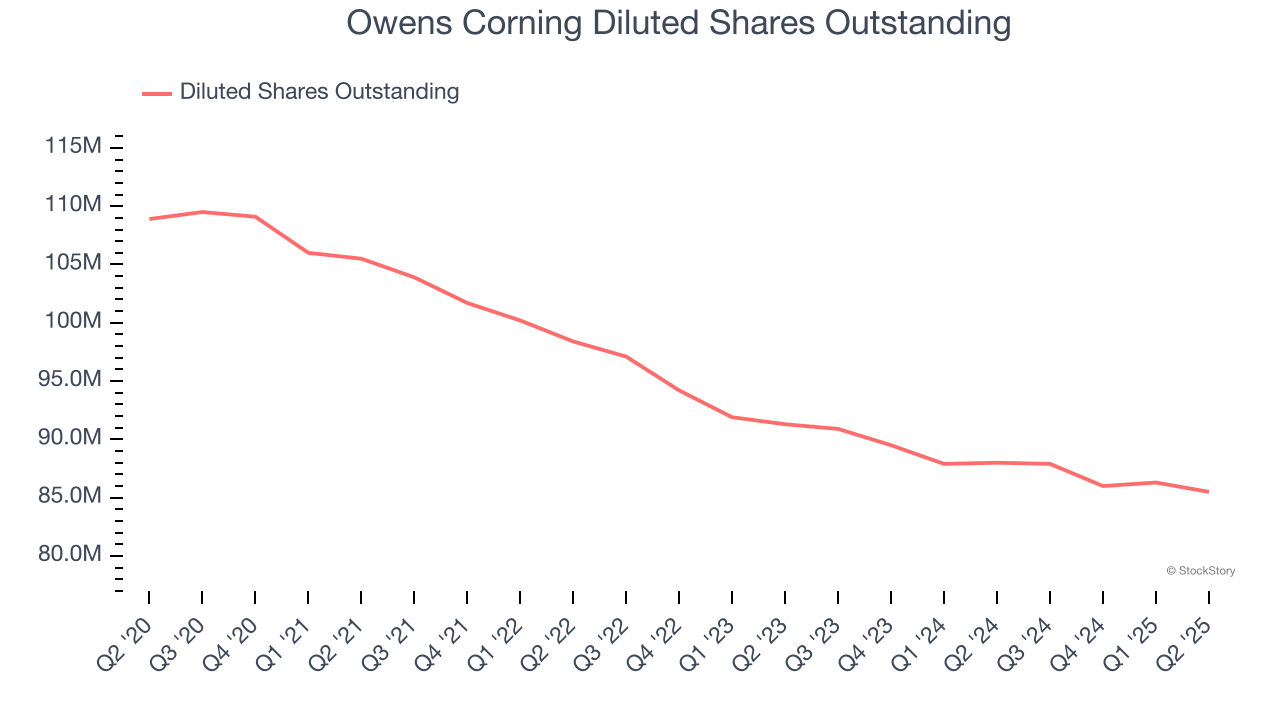
Like with revenue, we analyze EPS over a shorter period to see if we are missing a change in the business.
For Owens Corning, its two-year annual EPS growth of 8% was lower than its five-year trend. We hope its growth can accelerate in the future.
In Q2, Owens Corning reported adjusted EPS at $4.21, down from $4.64 in the same quarter last year. Despite falling year on year, this print easily cleared analysts’ estimates. Over the next 12 months, Wall Street expects Owens Corning’s full-year EPS of $14.78 to shrink by 6.3%.
Key Takeaways from Owens Corning’s Q2 Results
We enjoyed seeing Owens Corning beat analysts’ revenue and EPS expectations this quarter. Q3 revenue guidance also came in ahead of expectations. Overall, we think this was a decent quarter with some key metrics above expectations. The stock remained flat at $140.00 immediately following the results.
Is Owens Corning an attractive investment opportunity at the current price? We think that the latest quarter is only one piece of the longer-term business quality puzzle. Quality, when combined with valuation, can help determine if the stock is a buy. We cover that in our actionable full research report which you can read here, it’s free.
